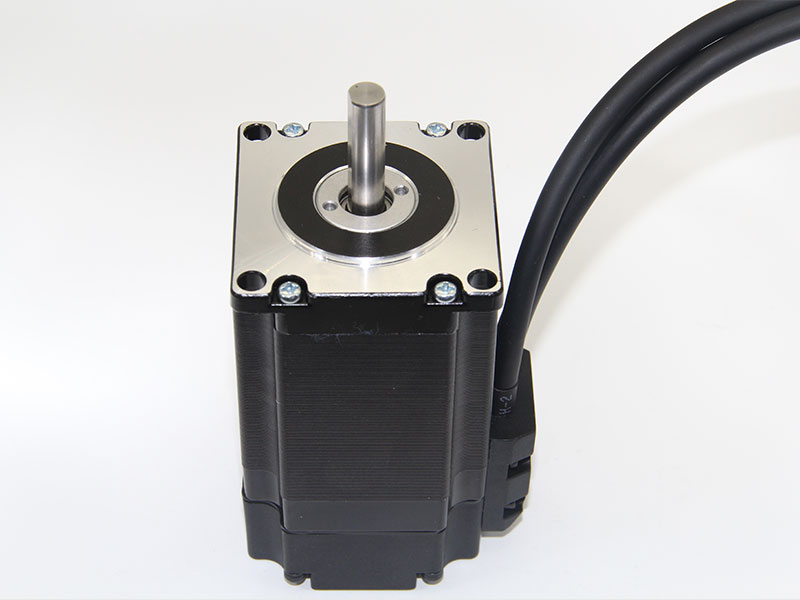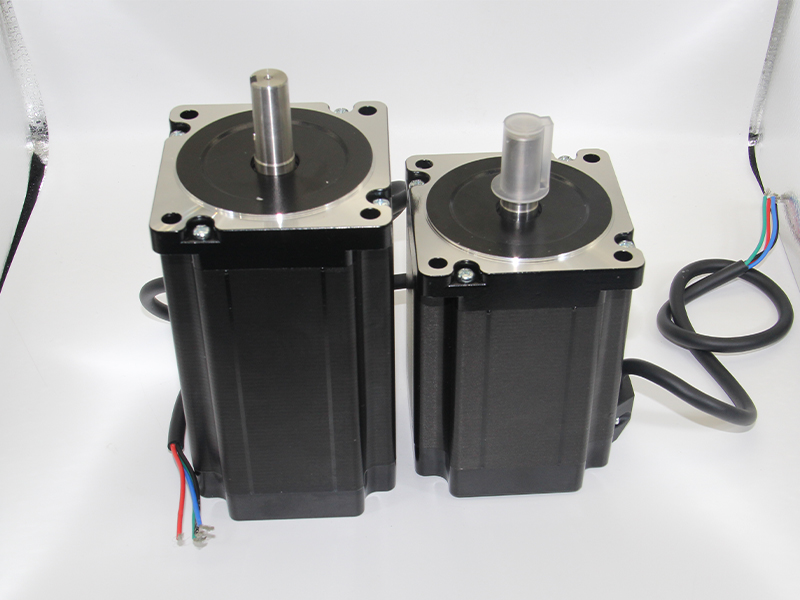Half-Step vs. Full-Step
 Oct 13, 2023|
Oct 13, 2023| View:237
View:237Stepper motors, those unsung heroes of the engineering world, play a pivotal role in various applications where precision and control are paramount. Among the diverse types of stepper motors, two stand out prominently:half-step stepper motorand full-step stepper motor.

Working Principles:
Stepper motors are electromechanical devices that convert electrical pulses into precise mechanical motion. They operate on the principle of dividing a full rotation into discrete, equally-sized steps. Half-step and full-step motors achieve this in slightly different ways.
Half-Step Motors:
A half-step motor moves in increments of half a step angle, as the name suggests. It involves alternating the activation of two coils, which generates an intermediary step position. By energizing two adjacent coils at once, it offers finer resolution, resulting in smoother and more precise movement. This is particularly advantageous in applications where accuracy is paramount, such as 3D printing, CNC machines, and scientific instrumentation.
Full-Step Motors:
Full-step motors, on the other hand, move in increments equal to the motor's step angle. They activate one coil at a time, and the rotor rotates to align with that coil. While this results in simpler control and higher torque, it offers less precision compared to half-step motors. As a result, full-step motors are commonly found in applications like open-loop positioning, where precision is not as critical.
Differences in Application Fields:
The choice between half-step and full-step motors largely depends on the specific requirements of the application.
Half-Step Motors:
3D Printing: Half-step motors are a staple in 3D printers, ensuring intricate and precise layering.CNC Machining: They find extensive use in CNC machines for cutting, carving, and milling, where accuracy is vital.
Scientific Instrumentation: Instruments requiring fine adjustments, such as microscopes and spectroscopes, often utilize half-step motors for precision movement.

Full-Step Motors:
Textile Industry: Full-step motors are employed in textile machinery for tasks like spooling, winding, and weaving.
Automotive Applications: They are used in applications like automatic door locking mechanisms and fuel injection systems.
Consumer Electronics: Devices like camera lenses and disk drives may use full-step motors for their cost-effectiveness and reliability.
Advantages and Disadvantages:
Both half-step and full-step motors have their unique strengths and limitations.
Half-Step Motors:
Advantages:
Exceptional precision due to the smaller step size.
Smoother motion, reducing vibrations and noise.
Ideal for applications where fine control is required.
Disadvantages:
Slightly more complex control electronics.
May require more power to maintain position due to finer resolution.
Full-Step Motors:
Advantages:
Simpler control circuits, making them cost-effective.
Higher torque output for tasks requiring strength.
Disadvantages:
Reduced precision compared to half-step motors.
Limited suitability for applications where fine control is essential.
In conclusion, the choice between half-step and full-step motors boils down to the specific needs of your application. If precision and smooth motion are paramount, half-step motors shine, while full-step motors offer simplicity and torque for less demanding tasks. Stepper motors, in all their diversity, continue to drive the wheels of technological progress in various fields, making them a fascinating subject in the realm of science and engineering.








